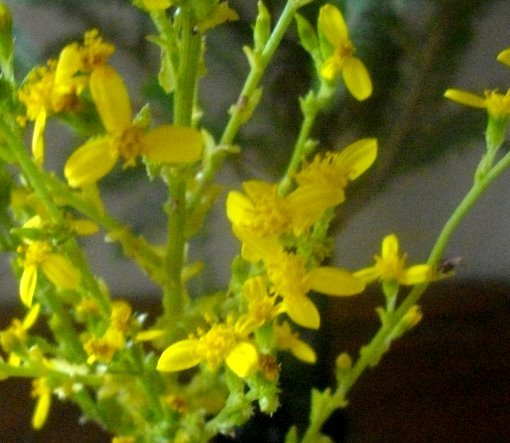Senecio pubigerus

Author: Ivan Lätti
Photographer: Thabo Maphisa
Senecio pubigerus, commonly known as the beggar’s groundsel and in Afrikaans as the takluisbossie (little branch louse bush) and the ghwanobossie (little guano bush) as well as more funny names, is a loosely branched, erect, soft shrub reaching 1 m in height.
The wand-like branches are hairy and sparsely leaved. The alternate, coarsely toothed leaves are oblong in shape, their margins rolled under.
The small flowerheads grow from white-woolly leaf axils and the tips of the slender, scale-covered upper branches. The usual Senecio single row of narrow, green, involucral bracts hold the base of the florets. The disc florets as well as the few, spaced rays around them are yellow. A flowerhead typically manages about three rays only. Flowering happens from autumn to after midwinter.
The specific name, pubigerus, is derived from the Latin prefix, pubi- meaning softly or weakly hairy and the Latin word gero meaning to bear on or about oneself, referring to the plant’s hairiness.
The species is distributed from the Cape Peninsula to Walker Bay and northwards to Ceres and Worcester. The habitat is dry, stony, clay or granite soils, often in disturbed sites. The species is not considered to be threatened in its habitat early in the twenty first century (Manning, 2007; Bond and Goldblatt, 1984; Andrew, 2017; iNaturalist; http://fernkloof.org.za; http://redlist.sanbi.org).

